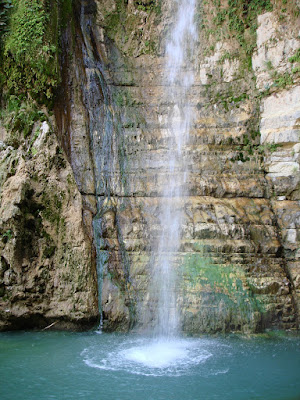We just got back from 3 days of journeys in the field. We visited the Shephelah (Judean lowlands), the Negev, and the Dead Sea. I have just a few pictures here. A few biblical examples and a few pictures of me in front of beautiful areas.
Moses struck a rock in the wilderness when God told him to speak to it. This simple act of disobedience prevented Moses from entering the Promised Land. The very thing that Moses had given his life for, his dreams of leading the people to the Promised Land, were shattered. Disobedience is expensive!

We are taking turns giving short devotions. I had the privilege of giving the morning devotion in the Judean Wilderness.

At En Gedi by the Dead Sea, we hiked up David's Canyon. This is the area where David was hiding from Saul. It is a beautiful oasis in the Wilderness.

Here is a picture of me in front of the Elah Valley. This is the place where David fought Goliath. The Philistines were encamped on the side of the Valley closest to me, and the Israelites were on the other side. Right behind me is where the battle probably occurred.

This is an excavation at Arad, in the Negev, known as the Great Wilderness in the Bible. This was known as a high place in the Bible. A high place is a place of worship and sometimes used to worship false gods. This altar shows two stones, with two altars of incense. This indicates that two gods were worshipped here. This is one of the reasons for which God punished the Israelites and they went into captivity. It is likely that this high place was torn down by Josiah.

This is Nahal Zin, a beautiful canyon in the Negev. I can't believe all the beautiful places there are here. We hiked up one of the sides of this canyon.

 The disciples got stressed and woke Jesus up. He immediately calmed the storm.
The disciples got stressed and woke Jesus up. He immediately calmed the storm.

























